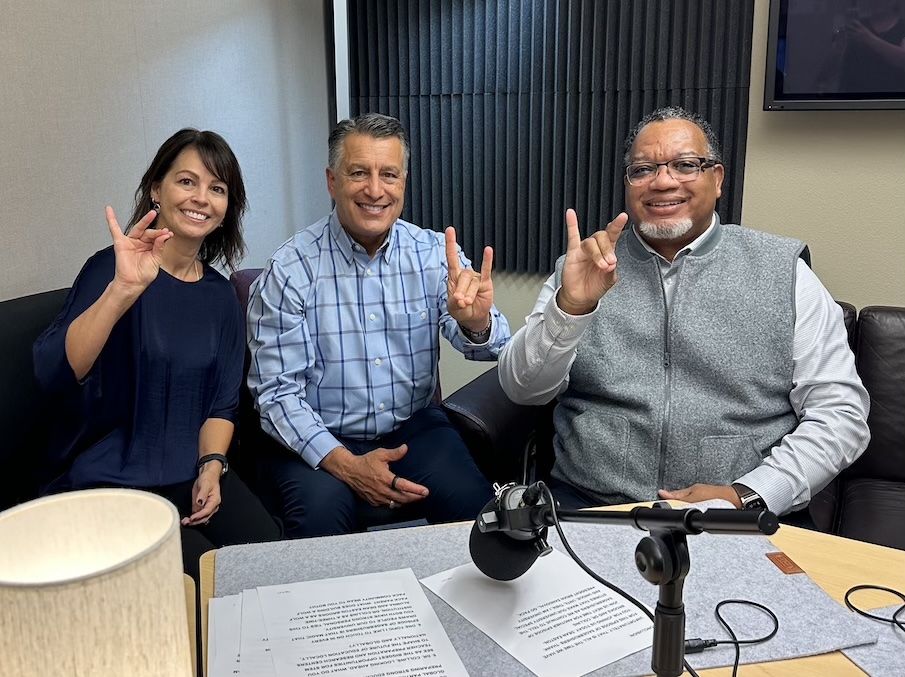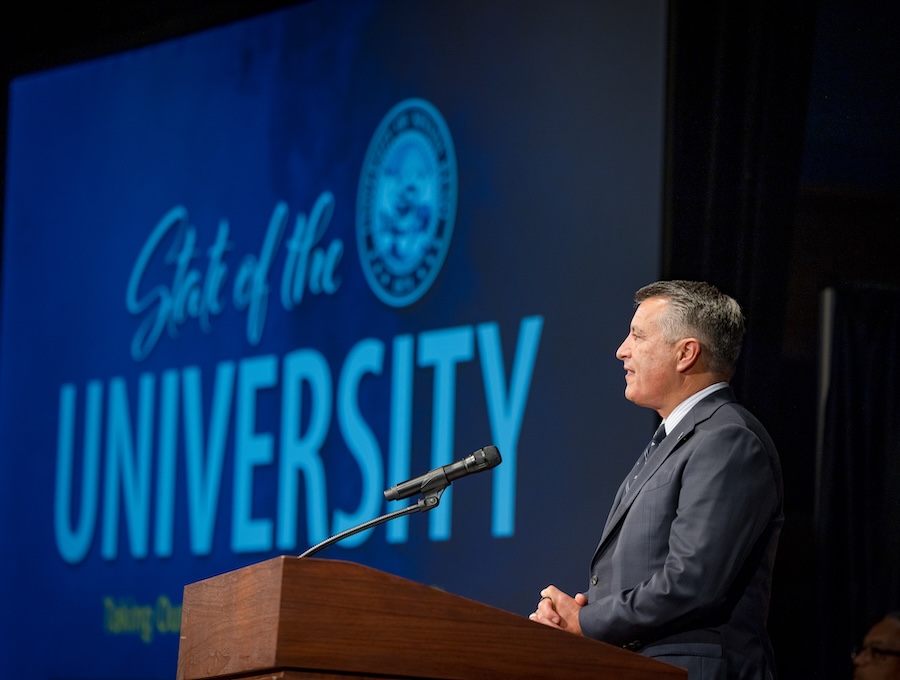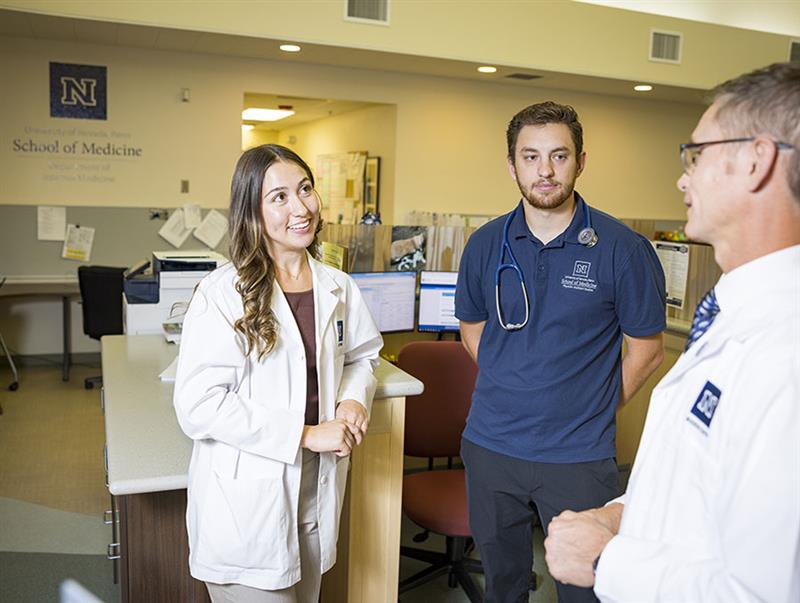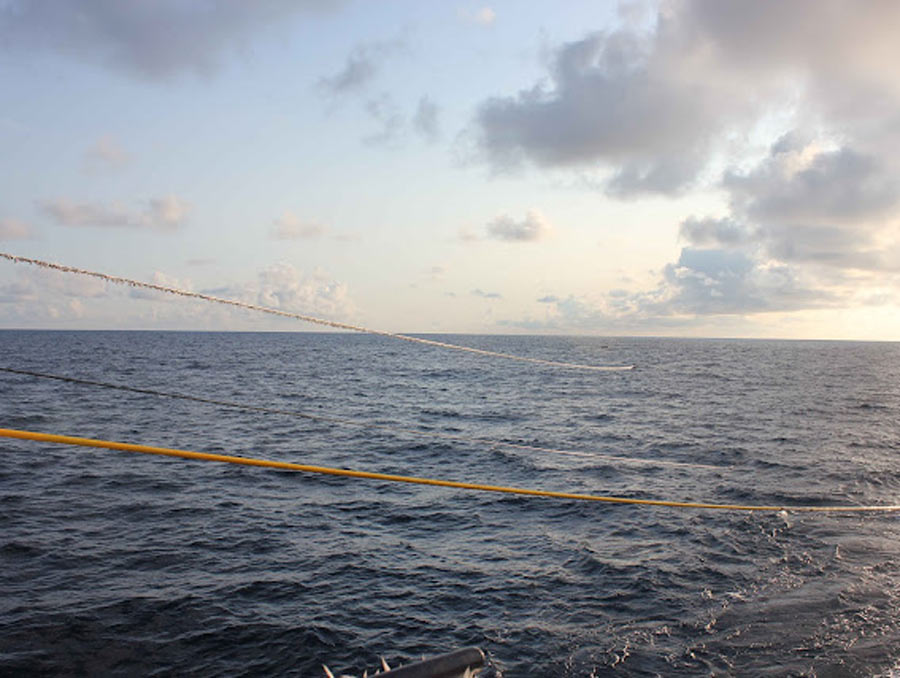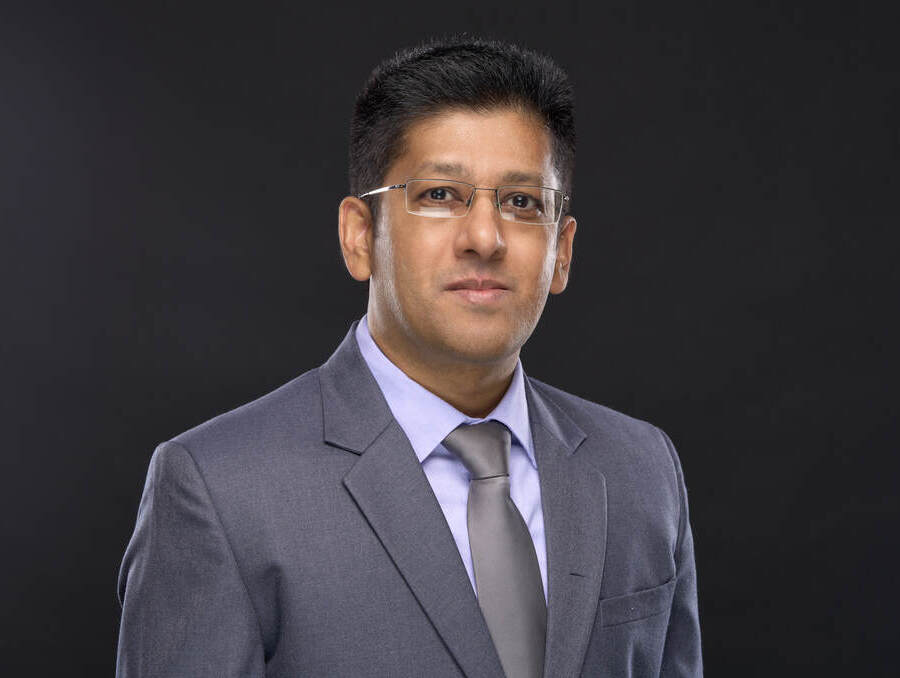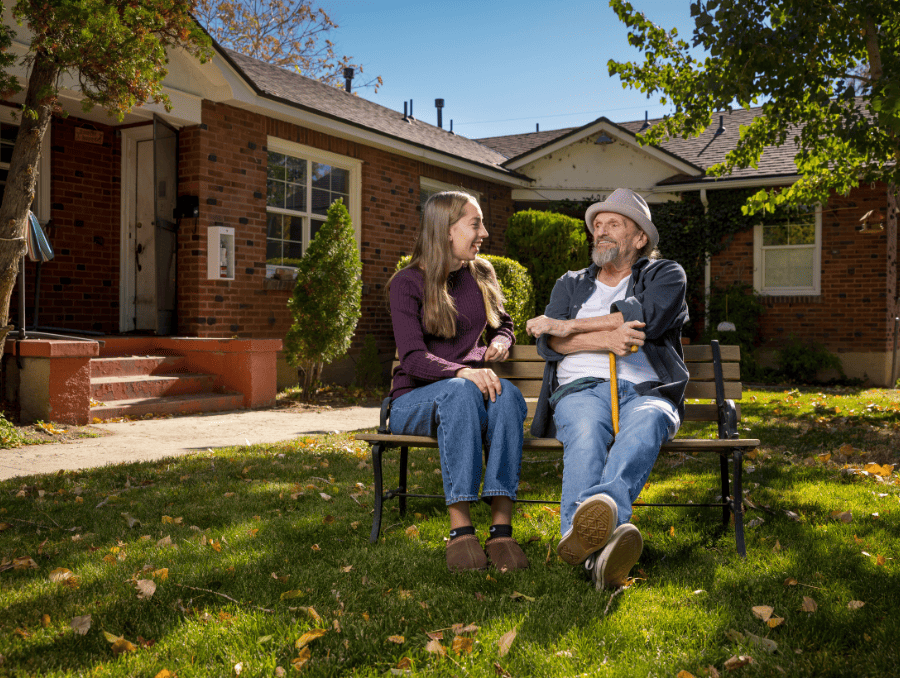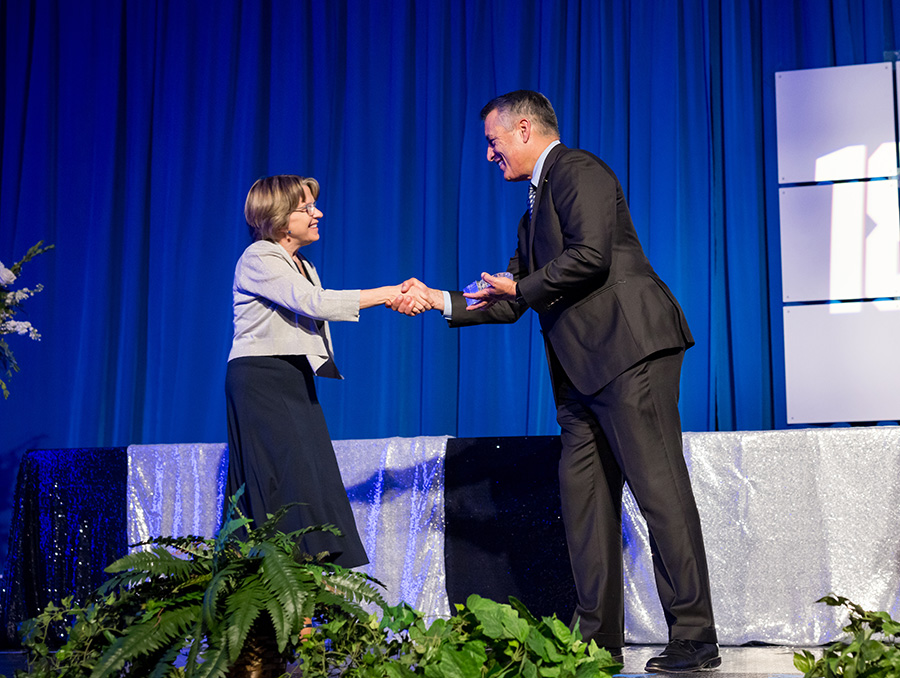Two top researchers at the University of Nevada, Reno will present their research to a group of lawmakers, including Sen. Harry Reid, Tuesday in Washington, D.C., as part of a National Science Foundation effort to keep legislators informed of the latest and best research being done in the United States.
Saiid Saiidi, of the University’s College of Engineering, will present his research on innovative materials and bridge design conducted in the University’s world-renowned Large-Scale Structures Lab, part of NSF’s Network for Earthquake Engineering Simulation. To test the new engineering designs, methods and materials, he built three large-scale model concrete bridges, each 110-feet-long, weighing 200 tons. Using the lab’s four large shake tables, he simulated destructive earthquake motions to destroy the structures and record the performance of the innovations.
Several of the successful innovations lay the groundwork for eventual adoption by engineers around the world to design more earthquake-resistant structures in seismically-prone areas. (Click here to link to news release with video.)
Graham Kent, Nevada Seismological Laboratory director and professor in the College of Science, will present his research on identifying earthquake fault hazards under large bodies of water.
Kent is part of a research team, including researchers from Scripps Institution of Oceanography and the U.S. Geological Survey (USGS), that discovered new faults beneath the Salton Sea near the southern end of the San Andreas fault in California. The findings, recently published in Nature magazine, followed several underwater surveys conducted over the past several years. Rupture on these newly discovered intersecting or “step-over” faults has the potential to trigger a large earthquake on the southern San Andreas fault in the magnitude 7.5 and higher range.
The idea that the San Andreas fault has in the past been triggered by flood-induced stress loading in the Salton Sea highlights the concern that future earthquakes on these cross faults have the potential to trigger a northward propagating earthquake on the San Andreas fault. This scenario could potentially enhance ground motion by a factor of three, heightening damage in the Los Angeles area.
“We’ve been able to show a correlation between past flooding from the Colorado River and triggering of intersecting earthquake faults under the Salton Sea,” Kent said.
(Click here to link to news release.)
Kent will also present information about his work mapping underwater earthquake faults at Lake Tahoe in California and Nevada and Pyramid Lake in Nevada, and his study of a swarm of more than a thousand earthquakes near Hawthorne, Nev.
Both are in Washington, D.C. September for the showcase of NSF-funded research on hazards. The showcase is in recognition of September as National Preparedness Month and in light of the recent East Coast earthquake and hurricane.
